Category: Allies
 HMS Ark Royal early in WWII
HMS Ark Royal early in WWII
The Second World War was the Royal Navy’s finest hour, so says the acclaimed naval historian, Paul Kennedy.
There are many remarkable aspects to Victory at Sea that might be the subject of an individual blog, but one I would like to call attention to is the way the book, and perhaps especially Ian Marshall’s illustrations, confirm how much the 1939-1945 war at sea was the Royal Navy’s War.
It was there at the very start, pushing out patrols and hunting-groups in search of the German surface raiders; and it was there at the every end, with British warships [HMS Duke of York] among the Allied fleets in Tokyo Bay in 1945, and another bidding godspeed to Pres Truman in Plymouth harbor after the Potsdam settlement is over.
By my count, a full 23 out of the 53 beautiful Ian Marshall paintings are of ships and naval actions involving the Royal Navy, and they range from paintings of storm-tossed little escorts to magnificent ones of the HMS Ark Royal being slowly towed into Malta’s Grand Harbour. The very cover of this book shows, dramatically, the Bismarck under attack by the puny [if also very effective] Swordfish torpedo planes.
Chapter after chapter of this book is devoted to what was really the greatest, longest-lasting maritime struggle of all, the Battle of the Atlantic, not concluded until the serried ranks of Doenitz’s U-boats were tied up in Allied harbours. And from chapter 5 there begins another campaign story, that of the Battle of the Mediterranean, including the Taranto Raid and the many Malta convoys. A whole number of Ian Marshall’s paintings are of British warships at Malta, because that was one of his favourite places as a backdrop to his art.
And this was a Royal Navy which was willing to take incredible losses in the fight to keep control of the sea. Of course Churchill would have it no other way, but the service itself never flinched at the high costs of fighting – there is considerable detail throughout this book of the HUGE losses of merchant ships and escorts in the Atlantic and Arctic convoy campaigns, the stupendous cost in Royal Navy destroyers off Dunkirk and Crete, the terrifying Malta convoy experiences – just count how many cruisers and destroyers, not to mention the many original carriers, were lost against enemy action in this war.
And yet this was a navy that was still receiving newer and more effective warships from the hard-working British shipyards throughout the war: new KG-V-class battleships, the Illustrious-class carriers, town-class cruisers then many new light cruiser classes, fleet destroyers, frigates, sloops, corvettes.
If the lengthy conflict wore down the British economy, there was no sign of that until the very end – although it was clear by 1943 (this is one of the big points stressed in this book) that the US Navy was emerging as a far larger force than anything that had been seen in world history. And this is why, surely, the sub-title of this book Naval Power and the Transformation of the Global Order in World War II is most appropriate..”

Paul Kennedy is the author of Victory at Sea: Naval Power and the Transformation of the Global Order in World War II, published by Yale University Press.
The hard-hitting .35 Whelen centerfire rifle cartridge, born a century ago as medicine for big game up to and including Alaskan-Yukon moose and brown bears, continues to deliver.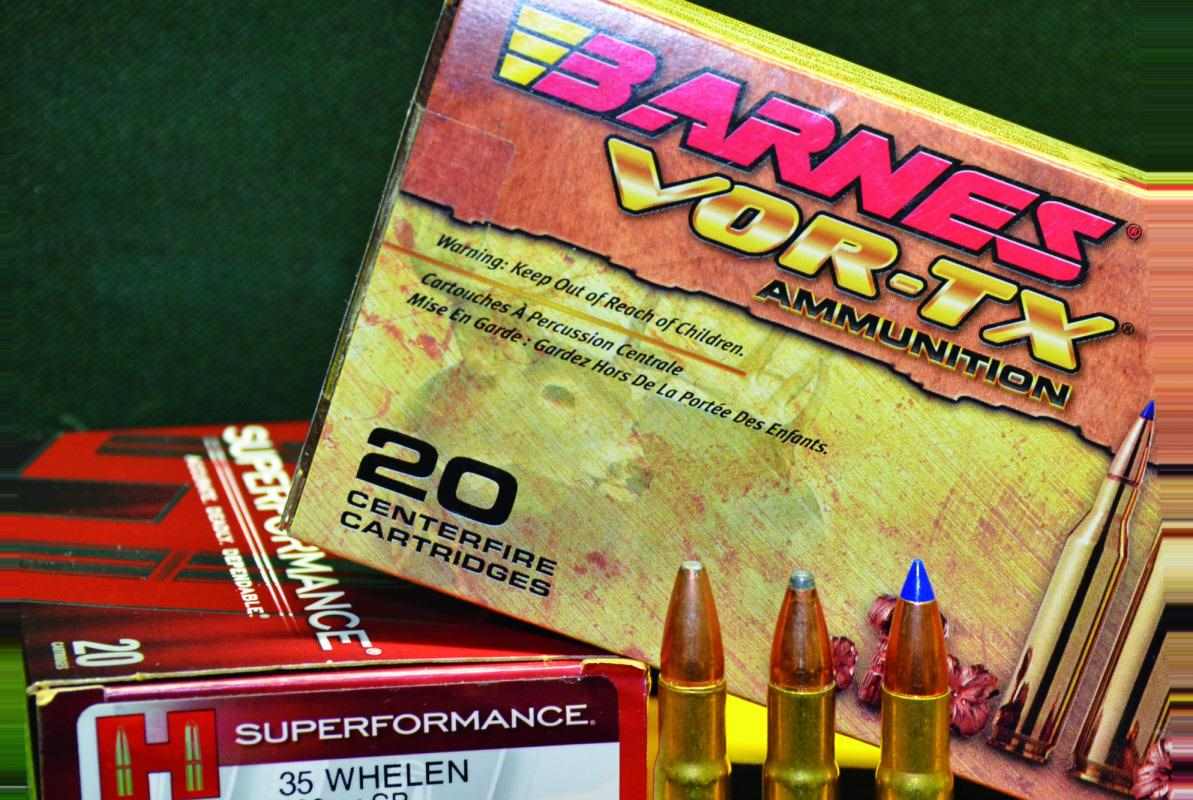 Through the decades, numerous centerfire rifle cartridges have been here today, gone tomorrow flashes in the pan. The fact that the .35 Whelen has proven to possess an abundance of lasting power is a bit of a mystery considering it does not shoot as flat as a banjo string, pulverize large boulders at 1,000 yards, place bullets inside a quarter inch, or leap tall buildings in a single bound. What the .35 Whelen does do is reliably drop game ranging in size from whitetail deer to Alaska-Yukon moose at a level of recoil tolerated by the majority of hunters. I am never surprised to see rifles chambered for the old cartridge in hunting camps all across America and in a few other countries as well.
Through the decades, numerous centerfire rifle cartridges have been here today, gone tomorrow flashes in the pan. The fact that the .35 Whelen has proven to possess an abundance of lasting power is a bit of a mystery considering it does not shoot as flat as a banjo string, pulverize large boulders at 1,000 yards, place bullets inside a quarter inch, or leap tall buildings in a single bound. What the .35 Whelen does do is reliably drop game ranging in size from whitetail deer to Alaska-Yukon moose at a level of recoil tolerated by the majority of hunters. I am never surprised to see rifles chambered for the old cartridge in hunting camps all across America and in a few other countries as well.
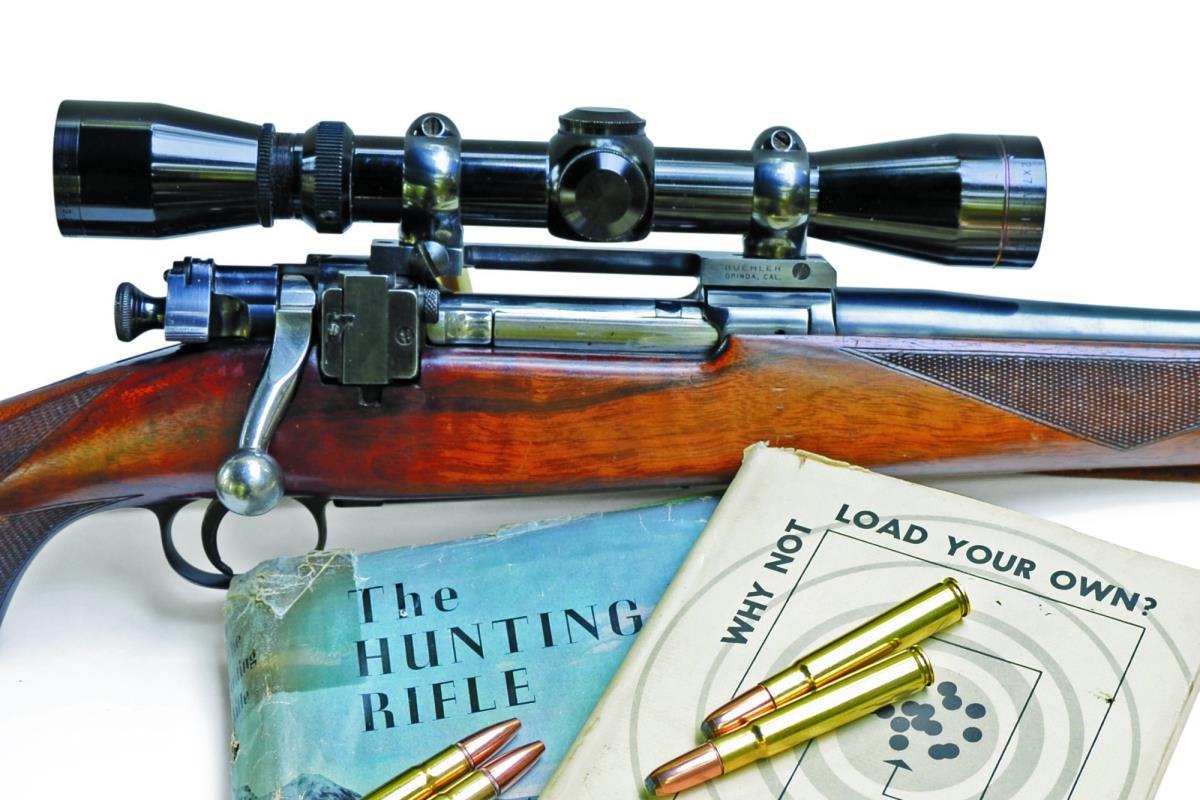
Then
Townsend Whelen mentioned the development of the cartridge in a couple of his books. On page 185 of a reloading manual titled Why Not Load Your Own? (1957) he states, “This cartridge was developed by James V. Howe in 1922 and named for the writer.” Among the loads included was the Hornady 270-grain roundnose (no longer available) pushed to 2,375 fps by a maximum charge of IMR 4350. There was also a 300-grain roundnose bullet made by Fred Barnes at 2,350 fps.
To quote Whelen in another of his books, The Hunting Rifle, which was published during the early 1940s, “In 1922 Mr. James V. Howe and the writer developed the .400 Whelen cartridge. This cartridge was constructed by taking the .30-06 case before it had been necked at all and necking it down to .40 caliber. About the time we completed development of this cartridge, I went on a long hunting trip in the Northwest, and when I returned, Mr. Howe showed me another cartridge that he had developed. The .30-06 case was necked to .35 caliber to use existing .35-caliber bullets.
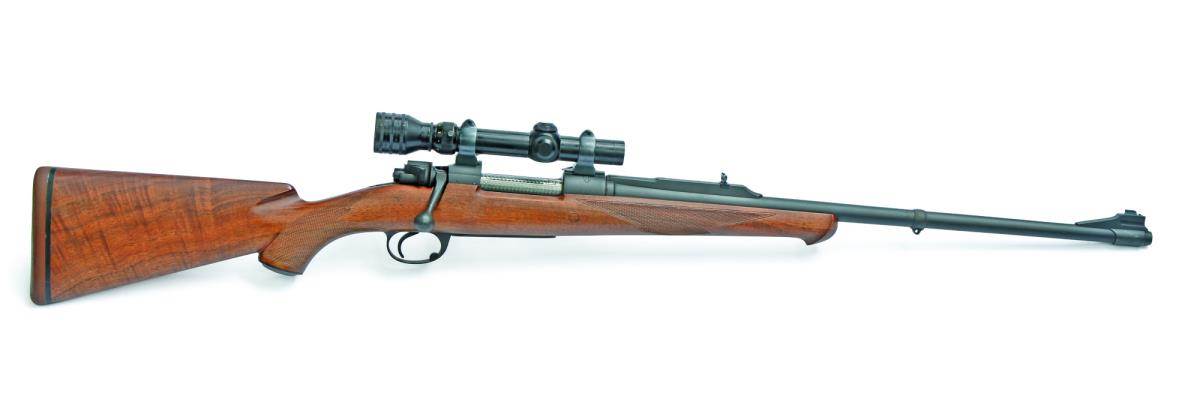
Mr. Howe asked my permission to call this cartridge the .35 Whelen, but he alone deserves credit for its development.”
At the time, Colonel Whelen was commanding officer of Frankford Arsenal in Philadelphia where Howe was in charge of the machine shop tool room. An accomplished gunsmith and stockmaker, Howe left Frankford in 1923 and joined with Seymour Griffin to form Griffin & Howe, a shop that became widely known for building fine custom rifles, many on the 1903 Springfield action.
Whelen did play an important role in the creation of the cartridge. Among his many friends was Leslie Simpson, an American who was considered to be an authority on hunting the African continent. During one of their conversations, Simpson voiced his disappointment with the performance of his Winchester Model 95 lever action in .35 Winchester on lion and opined that a cartridge of the same caliber with a velocity of 2,500 to 2,600 fps in a bolt-action rifle would be ideal. Whelen mentioned this to Howe, and the rest is history.
John Eddy may have been the first hunter to use a rifle in .35 Whelen on dangerous game. In his book Hunting the Alaska Brown Bear (1930), he writes about taking three of the big animals during the 1920s. His rifle, built on a 1903 Springfield action and wearing a Lyman 48 receiver sight, was one of the first in .35 Whelen produced by Griffin & Howe. His ammunition was loaded with 250-grain bullets, but no mention is made of their maker.

Through the decades, Remington has tamed more wildcats than any other company, and the .35 Whelen was added to the list in 1987 with the introduction of ammunition loaded with 200-grain Pointed Core-Lokt and 250-grain roundnose Core-Lokt bullets at respective velocities of 2,675 fps and 2,400 fps.
The limited-edition Model 700 Classic with a 24-inch barrel (produced only during 1987) and the standard-production Model 7600 slide action with a 22-inch barrel were the first rifles chambered for it. The Model 7400 and Model 750 autoloaders in .35 Whelen came later. Another bolt-action rifle in .35 Whelen that springs to mind is the Ruger Model 77. Also included are the single-shot Ruger No. 1, the single-shot Thompson/Center Encore, the single-shot H&R Handi Rifle, the single-shot CVA Scout, and the single-shot Traditions Outfitter. There have been many factory rifles chambered in .35 Whelen over the decades.
Should a search for a .35 Whelen rifle prove unsuccessful, any good bolt-action rifle in .30-06 or other member of its cartridge family is a candidate for rebarreling. Reboring and rechambering the barrel to .35 Whelen is an option offered by JES Rifle Reboring in Cottage Grove, Oregon. In addition to bolt-action rifles, they perform the work on the Remington 760/7600 pump guns and 742/7400 autoloaders in .30-06 and .270 Winchester. I have seen a Browning BLR lever action and a Browning reproduction of the Winchester 1895 single shot so converted, but I do not know who did the work.
Through the years, I have hunted with several different rifles in .35 Whelen. One of the more accurate was a Remington Model 700 Classic that, among other things, accounted for a good elk. My handload for it pushed the Swift 225-grain A-Frame bullet along at 2,650 fps. Remington built a few Model 7600 carbines with 18.5-inch barrels, and I have used one of those along with Remington 200-grain factory ammo to take several feral pigs and a medium-size black bear.
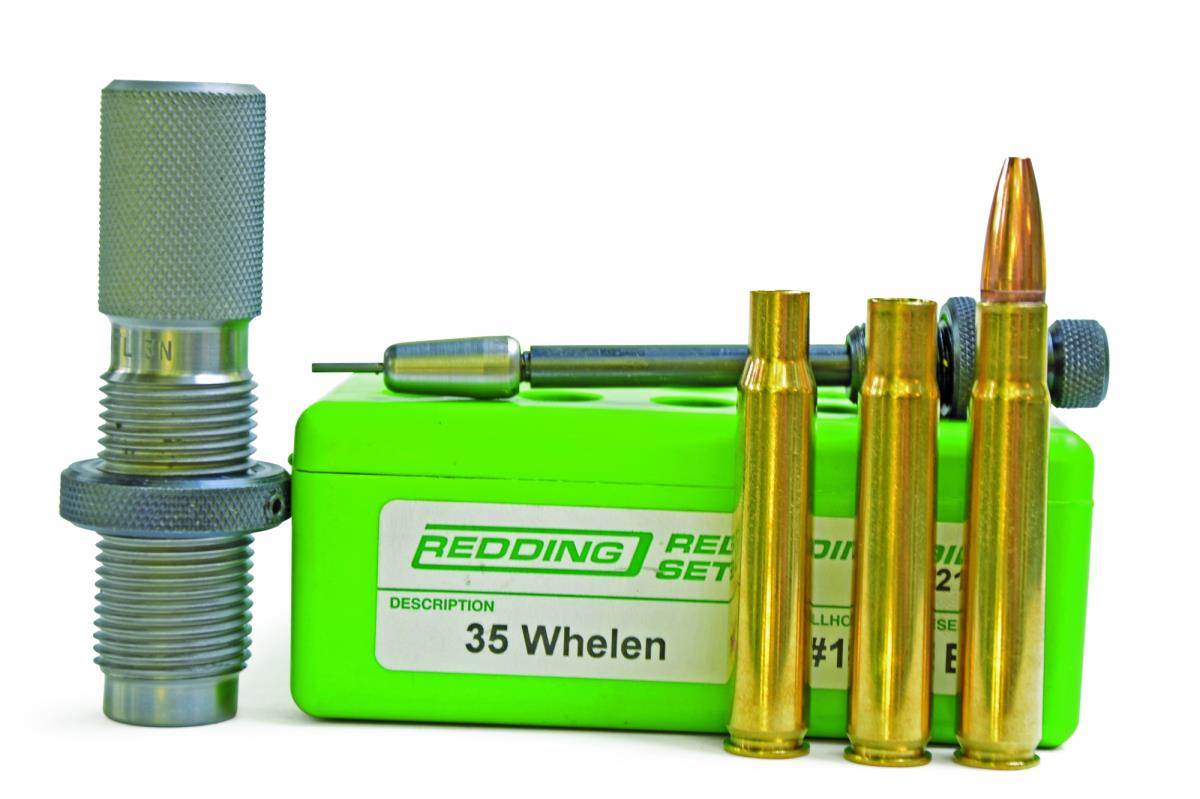
However, the .35 Whelen rifle I have taken to the field most was custom-built about 35 years ago by Butch Searcy. He began by modifying a square-bridge ’98 Mauser action to accept quick-detachable rings made at the time by Kimber of Oregon.
A quarter rib machined for the 22-inch Apex barrel has a folding adjustable sight, and the front sight, on a banded ramp, has a fairly large bead. To make sure 275-grain and 300-grain bullets made by Barnes in those days would stabilize, I requested a 1:12 rifling twist rate. Searcy also modified the bolt shroud for a Model 70-style safety and attached the front quick-detach sling-swivel receptacle out on the barrel. The barreled action then made its way to the custom shop of E.C. Bishop & Son of Warsaw, Missouri, for a niece piece of handcheckered walnut. A steel cross bolt just behind the recoil lug of the receiver reinforces the stock. A Redfield 1-4X scope in the Kimber rings took hunt-ready weight to 8.5 pounds, and on its very first outing, the rifle dropped a very good Alaska-Yukon moose and one of the best black bears I have ever spotted. Each fell to a single Swift 250-grain A-Frame leaving the muzzle at 2,475 fps.

Now
The ammunition is presently cataloged by Barnes, Remington, Nosler, Federal, Hornady, Buffalo Bore, HSM, DoubleTap, and Choice Ammunition. Among those loaded with 200-grain bullets, Hornady Superformance tops them all in velocity by a considerable margin. Rated at 2,920 fps, it clocked an amazing 2,962 fps from the 22-inch barrel of my custom Mauser. That load should be quite deadly on deer, but for use on moose, elk, and big bears, more strongly constructed bullets are needed. For hunting those big-game animals, Federal ammunition loaded with the 225-grain Trophy Bonded Bear Claw and Barnes ammunition loaded with the 200-grain TTSX are a couple of the better choices.
The .35 Whelen is an excellent candidate for handloading. Unprimed cases are available from several sources, or you can do as we all did when the cartridge was a wildcat and run .30-06 cases through a .35 Whelen full-length resizing die with a tapered expander button. In the old days, I used unfired match .30-06 brass available on the military surplus market, and its quality was excellent.
A number of powders are suitable for use in the .35 Whelen, and there was a time when I mostly used IMR 4064. It is still a good choice, but I have since burned more Reloder 15 than anything else. Accuracy is usually quite good, and shot-to-shot velocity variation is minimal. But as illustrated in various reloading manuals, many other propellants, including Varget, W748, Accurate 2460, and VihtaVuori N140, work quite well. Standard-force primers, such as the Federal 210 and CCI 200, deliver enough spark to ignite most powders, but the Federal 215 and CCI 250 sometimes deliver more uniform velocities with the various spherical propellants. This especially holds true when the ammunition is subjected to frigid temperatures during a wintertime hunt.
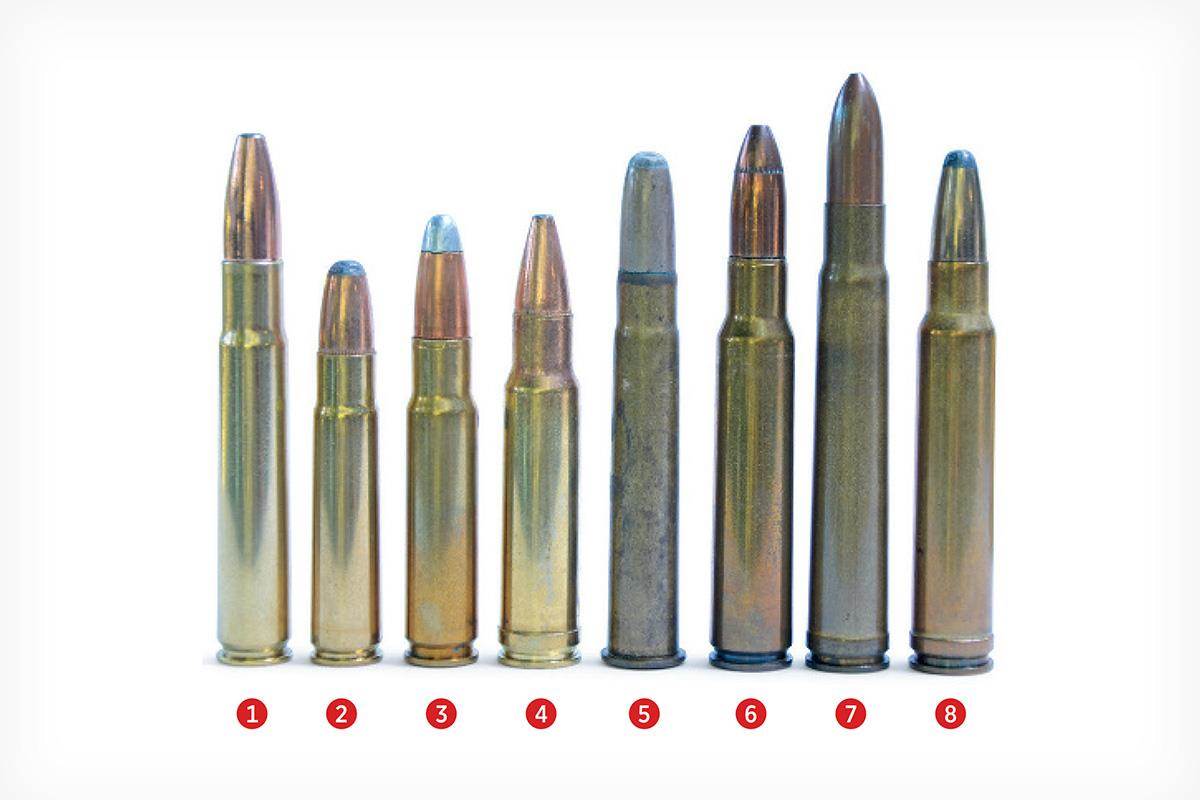
When handloading for deer and other game similar in size, fairly soft bullets like the 200-grain pointed InterLock from Hornady and the 220-grain SPFN from Speer should be excellent choices. The Hornady 200-grain FTX can be used, but since it is constructed to expand at slower .35 Remington impact velocities, damage to the eating part of a deer might be a bit much.
Moving to the opposite extreme, if I were to take on a brown bear in the alder thickets of Alaska, my ammo would be loaded with the 250-grain or 280-grain A-Frame from Swift. Due to a thin jacket and a soft lead core, the 310-grain Woodleigh expands to such a large frontal diameter that it does not penetrate as deeply as the Swift bullets. And then we have bullets constructed to drive deep on moose and elk with a bit less recoil. They include the Barnes 200-grain TSX and 200-grain TTSX-BT and the Swift 225-grain A-Frame.
For a friendly practice load, cast the 204-grain Lyman #358315 from scrap wheel weights and drive it to a velocity of 1,900 fps or so with IMR 4227.
The 9.3x62mm Mauser is the .35 Whelen’s biggest competition among factory-loaded cartridges of its powder capacity, and worldwide, it is far more popular. I also have a rifle chambered for that one, have taken game with it, and am quite fond of it as well. But I have yet to meet a big-game animal that could tell which of the two cartridges sent the bullet it was shot with.
